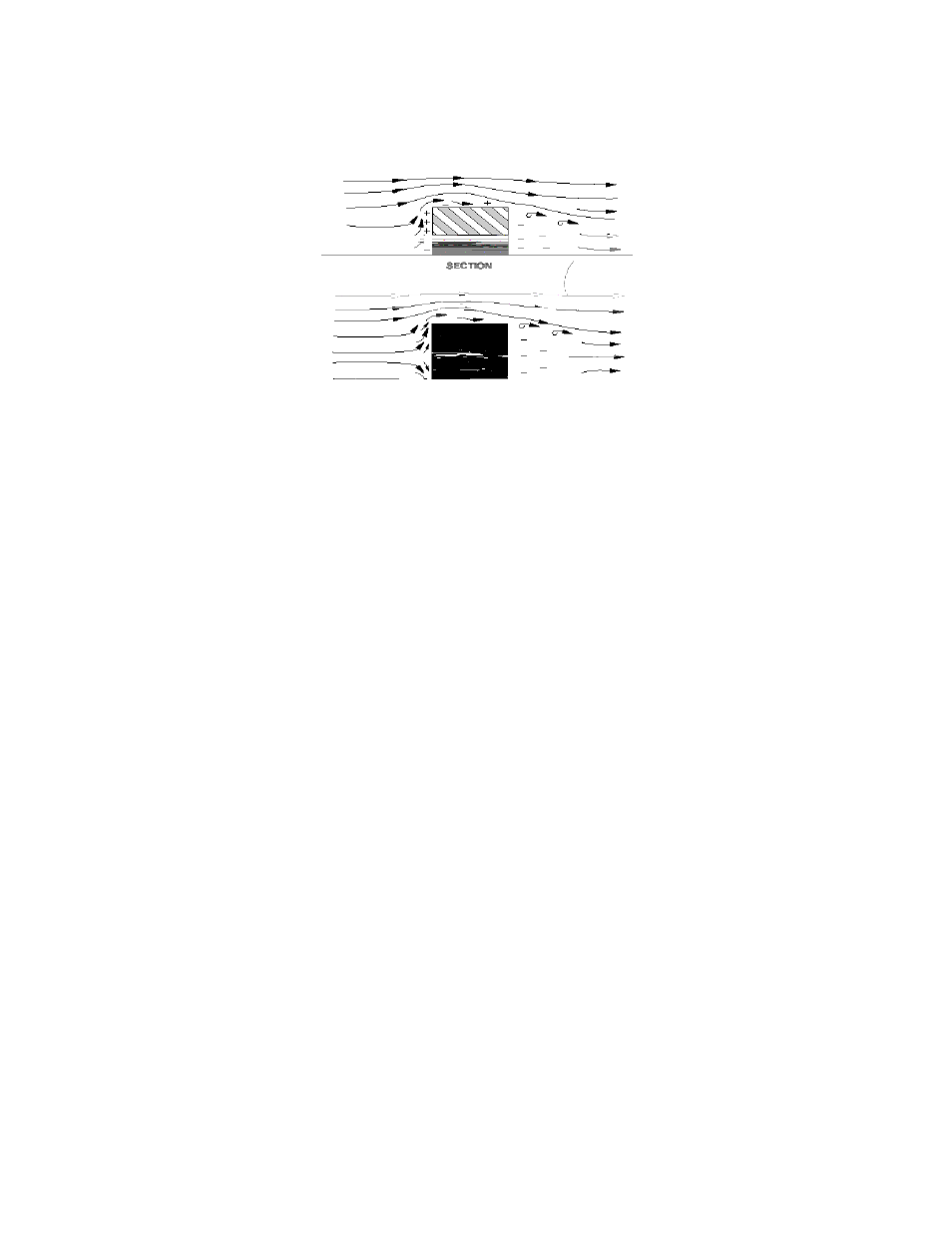Where houses leak – Retrotec Residential Pressure & Air Leakage User Manual
Page 7

Page 7 of 75
windy day, or holding their hand out the window of your car. This pressure can be called velocity pressure. A
building experiences a positive pressure that pushes against the wall on the windward side and a negative
pressure on the leeward (downwind) side. This has the effect of pushing air in through the holes on the
windward side and pulling air out through the holes on the leeward side.
Figure 2: Wind effects on a building; the windward side is affected differently than the leeward side.
Wind pressure is a square function with velocity, which means that when the wind speed doubles the pressure
quadruples. That would mean that a 20 mph wind would have four times as much force or pressure on the wall
as a 10 mph wind. In a windy environment, this can translate to a significant amount of leakage.
There are two types of pressure that wind creates, stagnation pressure and velocity pressure.
Stagnation pressure- is felt over a large area in the windward side and for several feet from the building and is a
result of the air stacking up due to the wind velocity. The wind's velocity is converted to a pressure.
Stagnation pressures are reduced by moving the outdoor pickup point about 15 feet from the building or away
from any object that the wind will strike. Place the tube at ground level with a flat plate covering the tube. The
pressure field around the building changes from side to side and because the wind direction varies somewhat;
using two pickup points at least 20 feet apart will reduce these fluctuations.
Velocity pressure – is caused by the velocity impinging in the end of the tube and converting itself into a
pressure at the tube end.
Exhaust mechanically removes energy but at least it can be controlled
Mechanical ventilation systems in a house include ones that exhaust (chimneys and exhaust fans), or supply air
(supply fans). These systems can each act to pressurize or depressurize all or parts of a house. If they're not
accounted for, these pressure imbalances can force air into and out of leaks in the building envelope.
Leaky forced air ducts and imbalanced systems cause pressure differences
Leaky duct systems can cause pressure imbalances. If the leaks are to the outside (not to conditioned areas of
the home), air will be pulled in (through leaks in the supply), or pushed out (through leaks in the return).
Forced air duct systems can contribute to air leakage if they are not correctly balanced. Unfortunately, even a
well-designed system can be thrown off from the simple act of closing a door. A closed door can effectively
close off a portion of a house from the duct system, limiting the flow of return air and causing a pressure
imbalance.
1.2
Where Houses Leak
